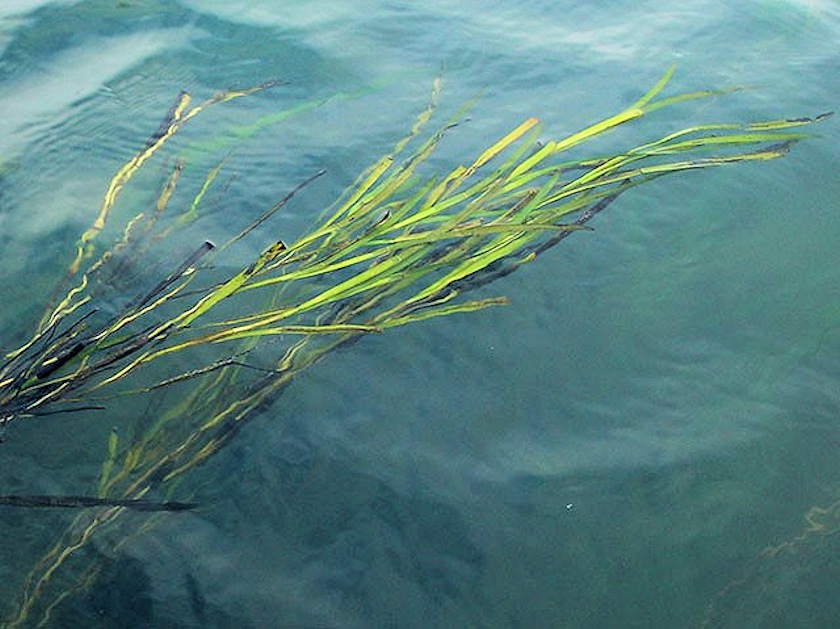
Biochemist and marine biologist Michael Konrad of South 40 Pier sends along the following natural history of one of our most important neighbors, eelgrass:
Life began in the ocean. Then continents generated by tectonic plate movements gradually became hospitable to life, and some living organisms migrated onto this new dry land and evolved modifications to enable them to survive in this very different terrestrial environment. The algae of the ocean (all photosynthetic life in the ocean is called algae) evolved into plants. Plants have roots to adsorb water and minerals from the soil and gather it on their surfaces. The flat surfaces of algae became the stems and leaves of plants, with veins to transport water up from the roots. In the angiosperms seeds developed in flowers that could be fertilized with pollen carried by the air, birds, and insects. Look at an eelgrass plant growing in the water of our bay and you will see all these terrestrial adaptations. What’s going on here?
The ancestors of all sea grasses were terrestrial, but the sea grasses moved back into the ocean. Look at the skeleton of a whale and you will see a small pelvic bone, even though the whale has lost its legs that the pelvis once supported. The ancestors of whales were land mammals with hoofed feet. Eelgrasses are the whales of the plant kingdom. Evolution is not always a one-way process!
Eelgrass (Zostera marina) has a rhizome root system which grows out aggressively on mud or sand bottoms and sends up shoots which grow into bunches of long leaves almost 2 cm wide and a meter or more long. Bamboo, also a grass, has rhizome roots, and gardeners know how difficult it can be to stop the spread of bamboo.
The top of a clump of eelgrass floats on the water surface in Fig. 1 (above), when the tide is low. Here the flexible plants are pulled by the flow of water in the direction of the tidal current. Dense meadows of eelgrass present a real barrier to a rowboat or even a small sailboat. At high tide, however, the blades are almost vertical, and it is much easier for a boat to move above them. Fig. 2 (below) is a close up of two blades of eelgrass. Here you see the prominent longitudinal veins and the junction between two leaves.

Eelgrass needs water and lots of sun to grow well.
We don’t see eelgrass close to our floating homes. The large beds of eelgrass start a hundred meters East in the boat channel and stretch further North and East almost to Belvedere. They extend South, about to the Spinnaker restaurant. Eelgrass doesn’t do well out of water, even occasionally for an hour or two, so it doesn’t grow where low tide exposes the bottom. It only grows up 3 to 4 meters, so deeper water blocks the sun it needs to grow well. Dependence on intense sun means eelgrass beds are usually thick during hot, sunny summers, but rather thin in the cool, cloudy summers we sometimes have.
Each eelgrass blade is a community.
Small algae grow rapidly on the surface of eelgrass leaves, and if not controlled would greatly inhibit growth by blocking most of the sunlight. A problem for eelgrass is a blessing for a diverse group of animals that move along the blades eating the layer of algae but not harming the grass. In Fig. 3 we see two examples. In the top panel is the beautiful Taylor’s Sea Hare (Phyllaplysia taylori), which lays its eggs in a rectangular case on blades of the grass. In the second panel a side view of a crustacean, probably the Eelgrass isopod (Pentiddea resecata), crawling along a blade. The third panel shows the isopod from the top. There are many more small animals that live at least part time on eelgrass.
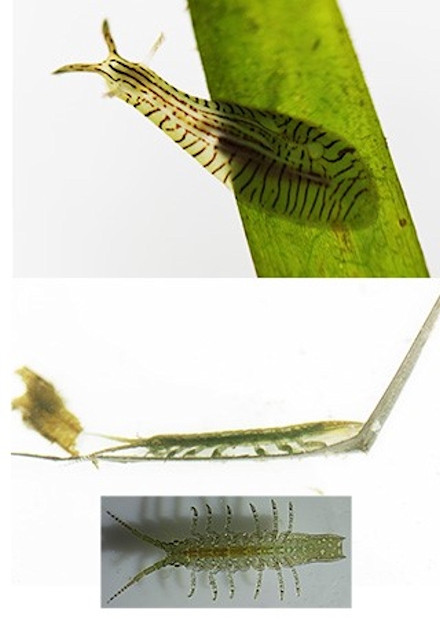
Eelgrass groves create a community.
An eelgrass bed can be thick, and thus it provides a protective habitat for small marine animals. Even large fish typically lay small eggs which produce small young fish, easy prey for large fish. By living in eelgrass beds, these young fish greatly increase their chance of growing up. So, we owe thanks to eelgrass for its role in putting fish on our table.
Port Townsend is the home of many beautiful, traditional wooden boats and is just across Puget Sound from the second largest community of house boats on the West Coast (we are the largest) in Lake Union. It is also the home of the Port Townsend Marine Science Center, which has published a beautiful and informative drawing: The Eelgrass Meadow. It had been on their website, but now (2024) I can’t find it, and so include it here as Fig. 4.
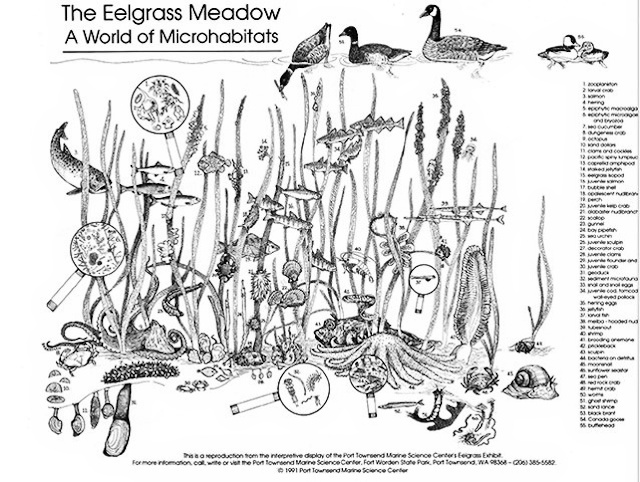
I draw your attention to the Bay Pipefish, which in the drawing is the very thin vertical fish above the handle of the magnifying glass at the bottom of the drawing. Fig. 5 is a photograph taken near South 40 Dock by my neighbor, Dennis Bayer, of an egret preparing to swallow a pipefish. I’m sure it grew up in the eelgrass; maybe it should have stayed there a little longer.
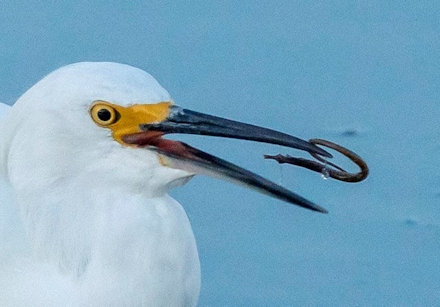
Eelgrass has its students.
We are lucky to have our own marine biology center nearby. It is the Estuary & Ocean Science Center, the Romberg campus of San Francisco State University, on Paradise Drive on the East shore of the Tiburon Peninsula. In the 1930s this site was a coaling station for the US Navy, and during WWII it was the base for construction of the large steel nets intended to protect us from Japanese submarines.
One of the Center’s professors, Katharyn Boyer, Fig. 6, and her students have studied eelgrass at several sites in San Francisco Bay, including Richardson’s Bay, and published many papers in the scientific literature.
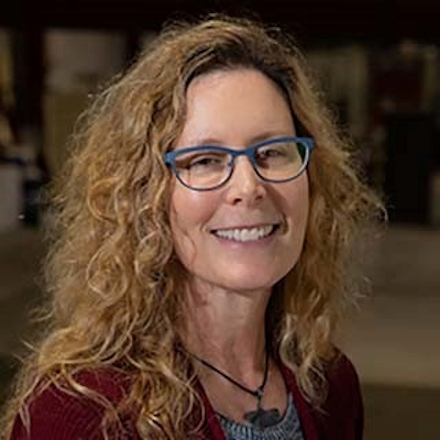
The Romberg Tiburon campus has weekly seminars, and the public is welcome. In past years I have attended many and often found them to be interesting. In addition, twice a year they sponsor a public forum to “engage community members in discussion about important scientific advances and environmental issues.”
Next, Michael examines the effects of boats and anchors on eelgrass and what’s being done about it.